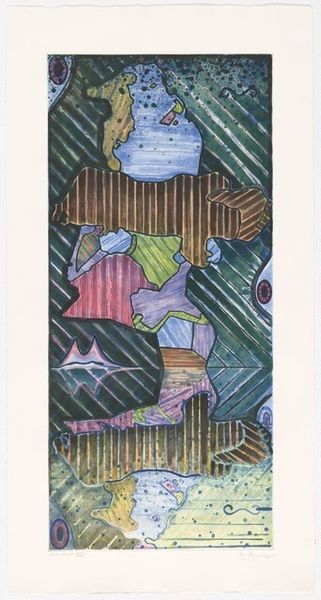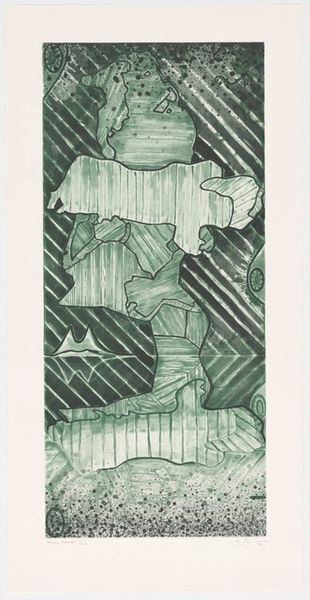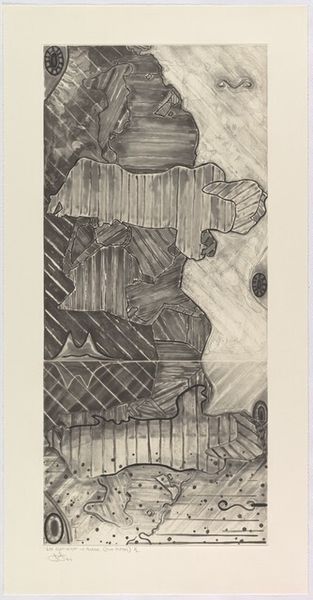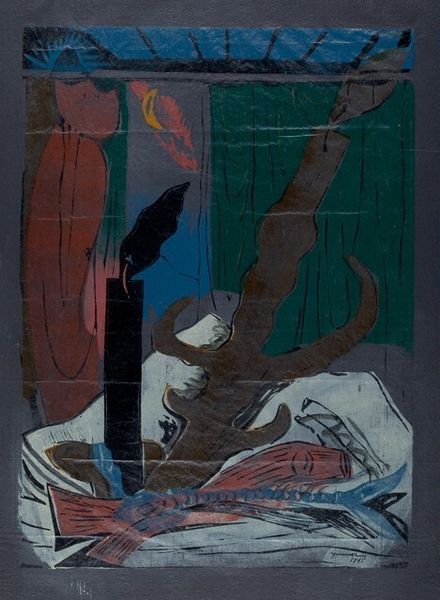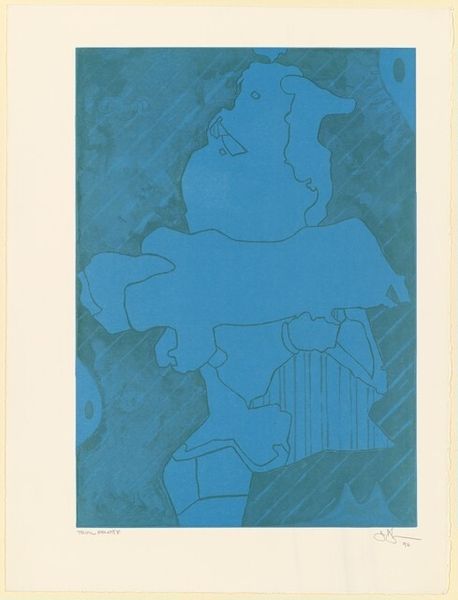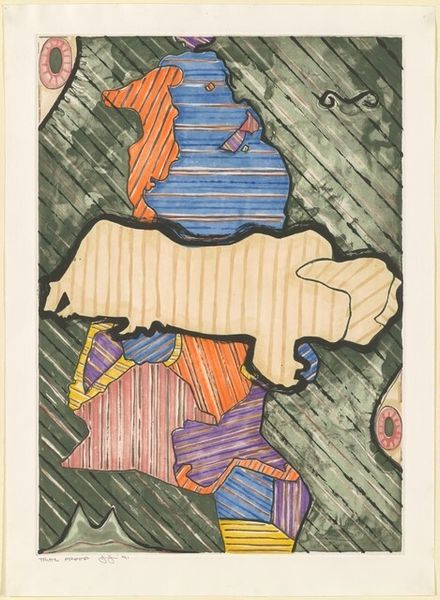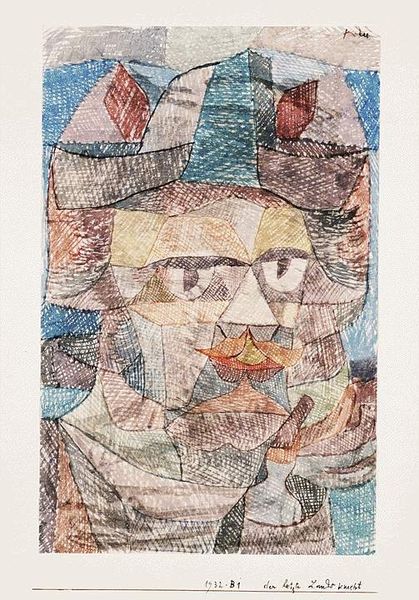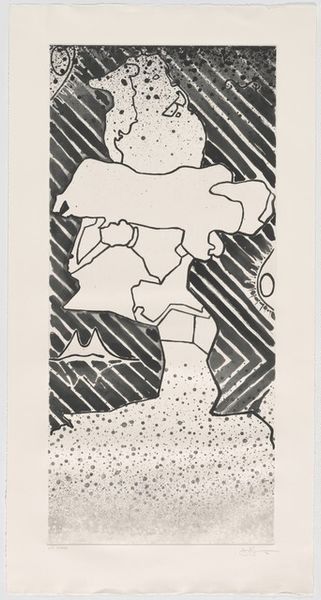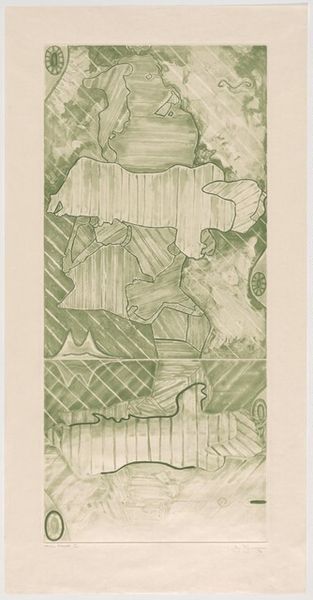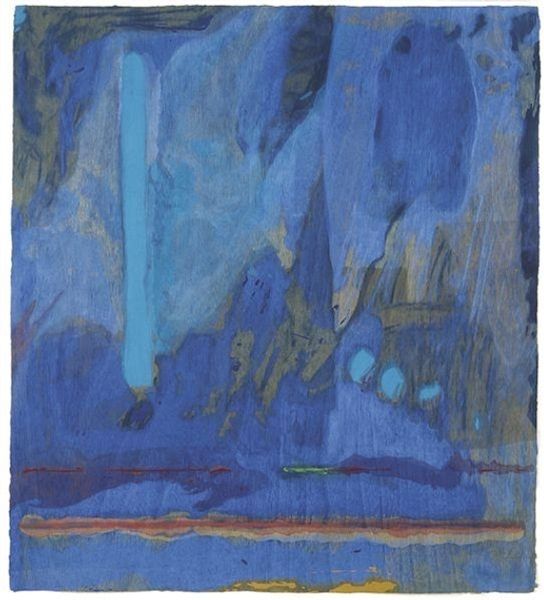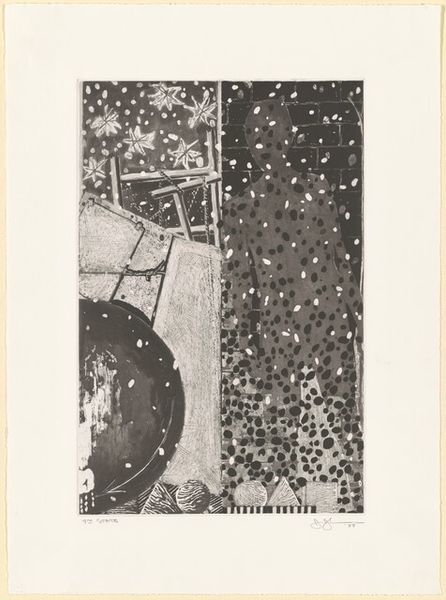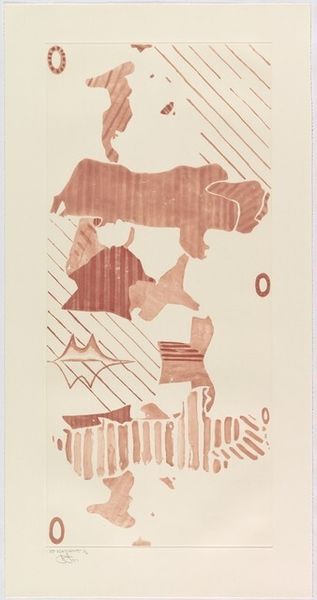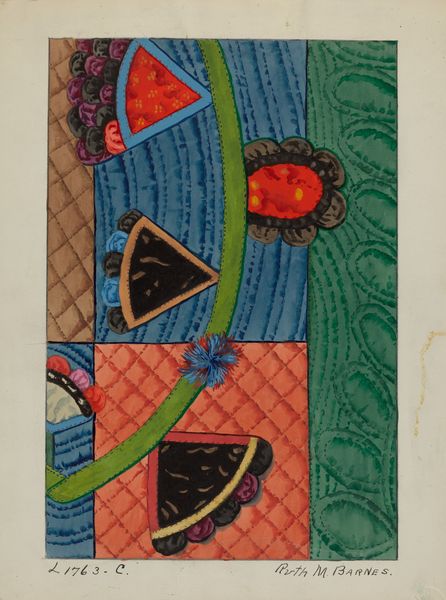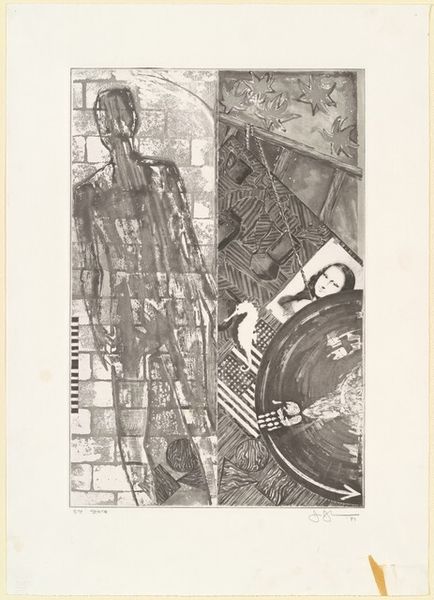![Green Angel 2 [trial proof XVII] by Jasper Johns](/_next/image?url=https%3A%2F%2Fd2w8kbdekdi1gv.cloudfront.net%2FeyJidWNrZXQiOiAiYXJ0ZXJhLWltYWdlcy1idWNrZXQiLCAia2V5IjogImFydHdvcmtzL2ZlYzMzZGMwLTU5MDUtNGRjMi1iNTdlLTA2N2I4MjhiN2ZkYi9mZWMzM2RjMC01OTA1LTRkYzItYjU3ZS0wNjdiODI4YjdmZGJfZnVsbC5qcGciLCAiZWRpdHMiOiB7InJlc2l6ZSI6IHsid2lkdGgiOiAxOTIwLCAiaGVpZ2h0IjogMTkyMCwgImZpdCI6ICJpbnNpZGUifX19&w=750&q=75)
mixed-media, print, watercolor
#
mixed-media
# print
#
abstract
#
watercolor
#
neo-expressionism
#
neo-dada
#
watercolor
Dimensions: plate: 111.76 x 46.67 cm (44 x 18 3/8 in.) sheet: 121.29 x 63.5 cm (47 3/4 x 25 in.)
Copyright: National Gallery of Art: CC0 1.0
Curator: This mixed-media print by Jasper Johns, from 1997, is titled "Green Angel 2 [trial proof XVII]." It’s an abstract piece employing watercolor among other media. What's your initial reaction? Editor: I'm struck by the mood, actually. It feels restless, unresolved. All those fragmented shapes layered one over the other… there’s a tension between order and chaos that makes it deeply unsettling, even anxiety-inducing. Curator: Yes, that resonates. It has the visual weight of archetypes and ancestral memory. The colors, the interplay of recognizable shapes and purely abstract forms, it stirs something ancient. The "Green Angel" title, specifically – angels as messengers and mediators have persisted across faiths, but their color carries varying interpretations. What do you make of it? Editor: Well, green can symbolize nature, growth, healing... but also envy, corruption, even decay. In the context of 1997, you have a booming tech sector, growing social divides, a looming environmental crisis—maybe the "angel" is a warning, a lament for a world on the brink? Curator: It feels apt, particularly considering the "trial proof" designation. It's as if we are looking at a repeated, reconsidered symbol, an idea or meaning re-examined and not necessarily settled. Johns often explores the space between what we think we see and what is actually there. It prompts one to confront one’s own perceptions and assumptions. Editor: Definitely. And by calling it a "trial proof," he is drawing our attention to the process itself, how meaning isn’t fixed but emerges through continuous layering, revising, challenging. It aligns, in a way, with the struggles and iterative evolution we observe in social and political movements. The art mirrors our lived experiences. Curator: I agree; the themes Johns returns to like signs, flags, targets and maps, speak to something both permanent and fragile in our collective identity. Symbols which bind us and can divide us. He's constantly asking us what stories we tell about ourselves, and to what end. Editor: Ultimately, I think it's about acknowledging the complex layers of history, identity, and meaning that shape our world—and maybe, hopefully, inspiring us to question and reshape them. Curator: Yes, an art that speaks beyond aesthetics into the ongoing cultural project of creating and dismantling ideas, perhaps the most activist stance of all.
Comments
No comments
Be the first to comment and join the conversation on the ultimate creative platform.
